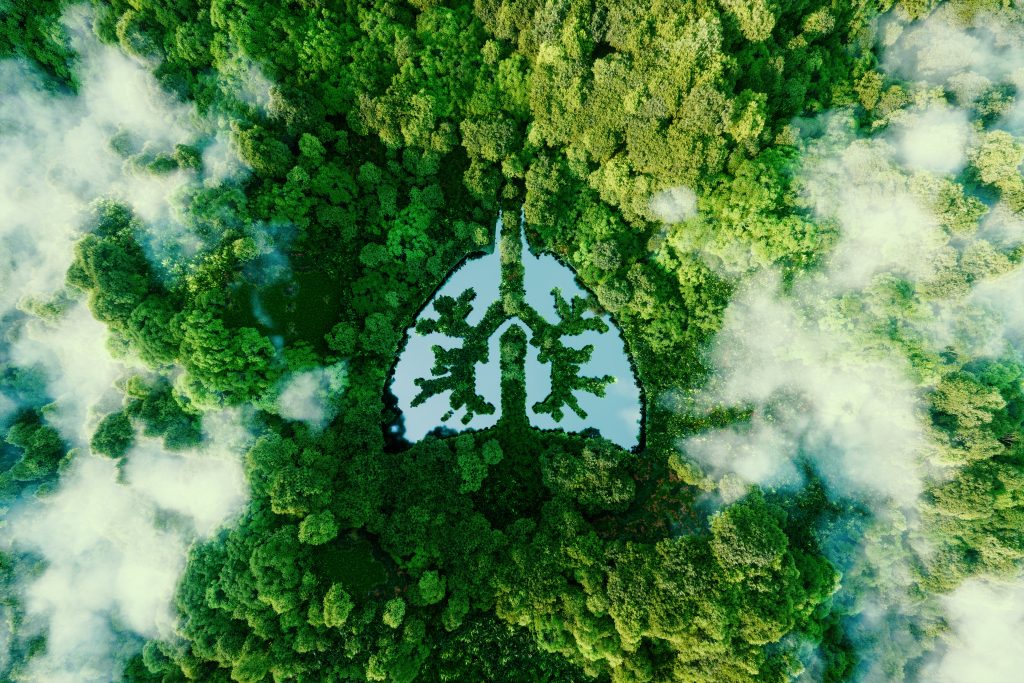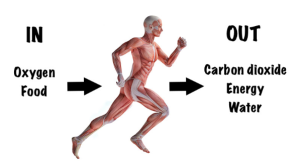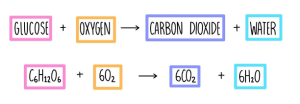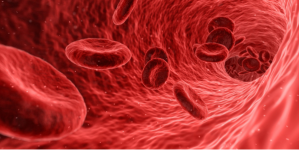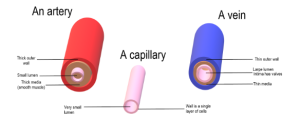Respiration (part 1) – transporting the goods
Oxygen is a very reactive element. If you blast a flame with oxygen you will get a very dramatic effect! Metal items exposed to oxygen, rust and fall apart. These reactions may seem inconvenient, but there are some reactions we are grateful for. There is one which occurs inside nearly every cell of our bodies, without which, we would not be alive. The name of this reaction is respiration. There are in fact two types of respiration, but I shall be referring to aerobic respiration in this post, which involves oxygen. I may talk about anaerobic respiration in another post.
Many people confuse respiration with breathing. It is not breathing. However, breathing is necessary for respiration to occur, but so is eating. Let’s explore…
The reaction
Respiration is the reaction of oxygen with glucose. These are called the reactants because they are reacting with one another. Oxygen is very reactive and glucose contains a lot of energy. When the two substances react this energy is released. This is good news for us as we can use the energy released to move, produce heat, grow, repair and many other things necessary for life. The substances produced (the products) are carbon dioxide and water. These are often both called waste products because the point of the reaction was to make energy, not either of these two products.
Transport of goods
So, now we know what respiration is, why it is important and where it occurs. But how does the oxygen and glucose get there? And what about the so called ‘waste products’? Don’t we need to take them away if they’re not being used. Er… yes. So, we need some sort of transport system. Something to deliver the oxygen and glucose. Blood. That’s right, the red liquid flowing throughout your body as we speak is tirelessly working hard to deliver these goods to different parts of your body and have been doing this since before you were born!
Your blood travels through tubes called blood vessels. There are three types of blood vessels:
-
- Arteries: These vessels have thick walls as they carry blood at high pressure and walls need to be able to cope with the high pressure without bursting.
- Veins: These vessels have thinner walls as the blood inside them is of a much lower pressure. The downside of this is that there is a risk of it flowing back in the opposite direction. To stop this, veins have valves which stop the blood flowing in the opposite direction.
- Capillaries: These are the smallest of the blood vessels and the final stop delivering the goods. If you want to get oxygen and glucose to the cells, this is where it happens. The walls are extremely thin (one cell thick) so as the substances can easily pass through them and into the place it is trying to get to.
A VIEW INTO THE FUTURE (PART 1): SPLIT BRAINS, GUT BACTERIA
The pump
So, just to summarise so far… 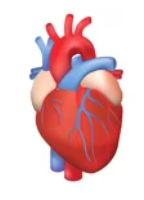
- There is a chemical reaction happening inside (nearly) every cell in your body called respiration.
- The point of this reaction is to produce energy.
- The reactants required for this reaction to occur are glucose and oxygen.
- The products of this reaction are carbon dioxide and water.
- The blood carries the glucose and oxygen to these cells in blood vessels.
- The blood also carries the products away from the cells and eventually out of the body.
So, what keeps the blood flowing so as to deliver the goods? You may already know it is the heart. This is our very own pump which continually beats since before we were born to pump the blood to our lungs and then back to the heart to pump it a second time around the rest of the body. When it pumps the blood to the lungs it has to pump quite hard, but not as hard as when it pumps around the rest of the body.
Any blood leaving the heart will be under a high pressure as it has just been pumped by the heart and so guess what type of blood vessel it will be transported in? An artery. Think A for artery and A for away. Blood flowing back to the heart will be under a lower pressure and so will be travelling in… veins! Think into the heart; and vein.
Why does it go to the lungs first? To get the oxygen and drop off the carbon dioxide. When you breathe in, the air you breathe in contains 21% oxygen. That oxygen passes into the blood as it makes its way to the lungs and when you breathe out you will breathe out more carbon dioxide as it leaves the body.
Next post I shall be writing a little more about the heart, lungs and circulatory system and also about how the glucose gets into the body.
5 REASONS WHY GOOD STUDY SKILLS ARE IMPORTANT
A bit about the author, Paul H:
 Paul is a qualified and experienced Physics, Maths, and Science teacher, now working as a full-time tutor, providing online tuition using a variety of hi-tech resources to provide engaging and interesting lessons. He covers Physics, Chemistry, Biology, and Science from Prep and Key Stage 3 through to GCSE and IGCSE. He also teaches Physics, Maths, and Chemistry to A-Level across all the major Exam Boards.
Paul is a qualified and experienced Physics, Maths, and Science teacher, now working as a full-time tutor, providing online tuition using a variety of hi-tech resources to provide engaging and interesting lessons. He covers Physics, Chemistry, Biology, and Science from Prep and Key Stage 3 through to GCSE and IGCSE. He also teaches Physics, Maths, and Chemistry to A-Level across all the major Exam Boards.

